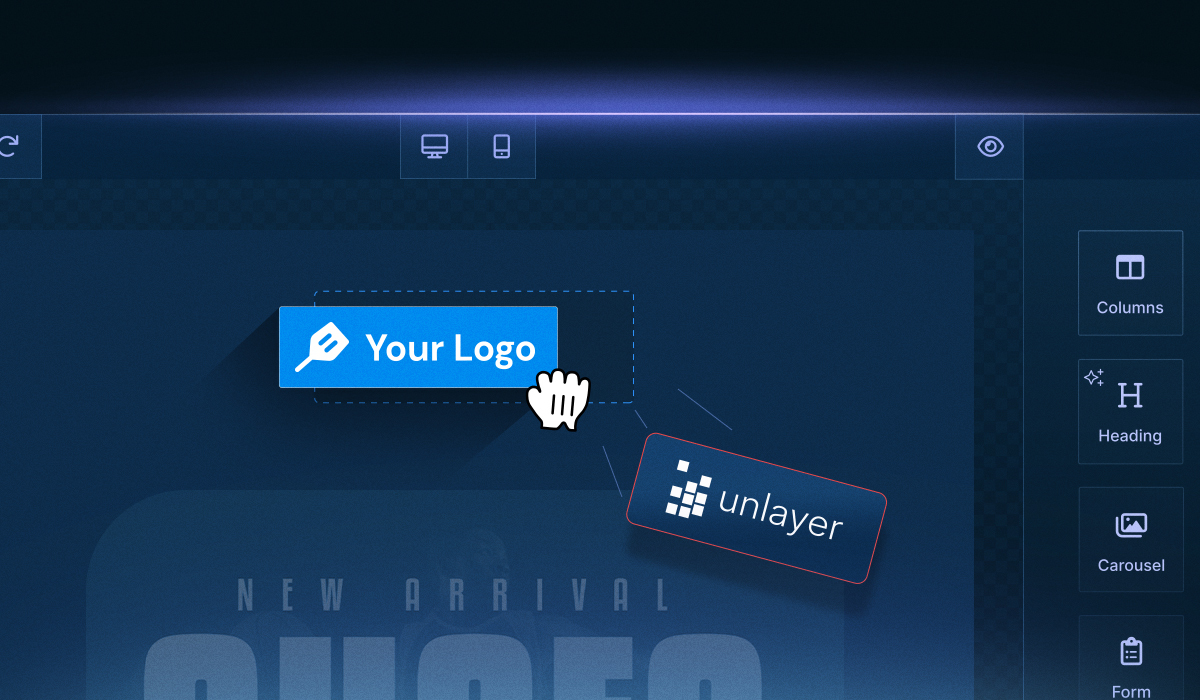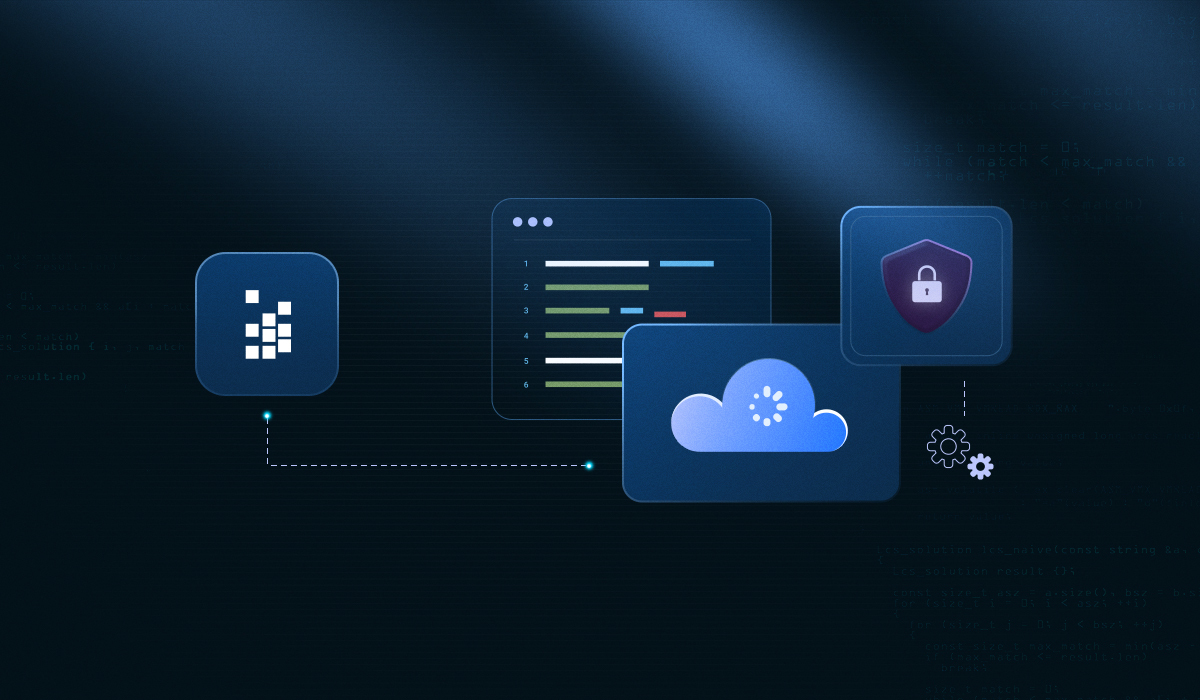Every developer knows the thrill of building from scratch, the control, the customization, the clean ownership. But once the first sprint kicks off, that thrill often fades into shifting requirements, inconsistent UIs, browser quirks, and bug lists that stretch weeks into months.
Content editors are one of the hardest examples of this trap. What seems like a simple drag-and-drop interface quickly becomes a complex system of responsive layouts, modular blocks, rendering logic, integrations, and maintenance work that rarely ends.
Embeddable editor SDKs offer a smarter path. They provide a production-ready, customizable foundation with drag-and-drop components, responsive design support, and flexible APIs that fit directly into your stack, without draining time on repetitive engineering. Instead of managing endless feature requests and fixes, teams can stay focused on product growth and ship faster with a polished user experience from day one.
In this blog, we’ll break down why modern development often takes longer than planned, what slows teams down when building editors, and how embeddable SDKs help reclaim that lost time.
Why Modern Development Eats More Time Than Planned

Most modern software projects still take three to six months longer than planned, even with better frameworks and automation. Development has evolved, but efficiency hasn’t caught up. Teams chase performance, scalability, and seamless user experience, but every new integration, dependency, or API adds friction to the build process.
Developers now manage tasks like compatibility checks and version updates to keep systems stable. This ongoing work can extend short development cycles into longer release periods. The more complex the product, the harder it becomes to deliver on schedule, and that’s where modern development loses most of its time.
Here’s what really slows teams down.
1. The lengthy development cycle
Building modern software is a balancing act between delivery speed and product stability. In reality, most developers spend less time coding than people assume. According to Forrester’s survey, engineers dedicate only 24% of their work hours to writing code. The rest goes into designing interfaces, debugging, testing, writing documentation, and sitting through review meetings.
When you’re developing a complex product feature like an internal editor or a custom builder, these cycles stretch even longer. Each component has dependencies, edge cases, and visual inconsistencies that need to be fixed before release.
A four-week roadmap often turns into a three-month sprint as teams loop through QA rounds and regression fixes. This constant switching between coding, testing, and debugging drains focus and momentum, leaving developers with little time to build or learn something new.
2. The complexity of custom solutions
Custom development gives teams control, but it comes with layers of complexity. Creating something like a responsive editor isn’t just a UI challenge, but a system of moving parts that demand constant coordination:
Rendering logic that needs to stay consistent across browsers
Schemas to define and maintain design data
User states that must persist across sessions and edits
Testing cycles to ensure pixel-perfect responsiveness
Each layer adds more code, more dependencies, and more chances for things to break. Developers end up wrestling with browser quirks, responsive breakpoints, and long debugging loops; even small features like text alignment or media uploads can take hours to refine.
3. Integration difficulties
Integration is rarely straightforward. Whether you’re integrating APIs, adding SDKs, or connecting third-party tools, aligning them with existing infrastructure is often the hardest part of any build.
A recent study found that organizations use an average of 1,061 applications, but only 29% are fully integrated. This is a clear sign of how easily teams underestimate the effort required to make systems communicate effortlessly.
Complexity here shows up in many forms:
Mismatched schemas that cause silent data failures
Authentication gaps that disrupt user flows
Version conflicts that derail sprints
Quick fixes that pile on technical debt
Each new dependency becomes another potential failure point — a broken callback, a CORS issue, or a hidden data mismatch that surfaces post-deployment. Every hour spent debugging integrations is time lost from building what users actually see.
4. The need for continuous updates and maintenance
Once a product goes live, it doesn’t stay static. Editors and custom-built interfaces demand constant upkeep as browsers evolve, frameworks update, and security patches roll out.
A feature that worked perfectly last month might suddenly break after a Chrome update or a dependency bump. Maintenance becomes part of the roadmap, whether planned or not.
Ongoing upkeep = Lost developer time + Slower innovation.
Developers who could be optimizing performance or exploring new architectures instead find themselves revisiting legacy code, testing compatibility, and refactoring outdated logic. It’s necessary work, but it quietly drains creative and technical momentum.
Building from scratch doesn’t have to slow you down. With Unlayer’s production-ready SDK, your team can quickly embed a fully customizable editor and focus on the features that matter most. Explore Unlayer SDK today. Explore Unlayer SDK today.
How Long Does It Usually Take to Build an Editor From Scratch
For most teams, building a working editor takes several weeks to reach MVP. That’s just the visible layer, such as the drag-and-drop interface and basic data persistence. What actually consumes time is everything underneath.
Front-end complexity (2–4 weeks): Handling drag events, nested block states, and dynamic layouts is rarely smooth. Tiny changes in one component can break another. Teams spend weeks fine-tuning responsive behavior and debugging layout shifts that appear only under specific screen ratios.
Rendering logic (1–2 weeks): HTML and CSS never render the same across browsers or email clients. Developers often rewrite sections multiple times to handle quirks in Outlook or Safari, extending what should’ve been a short task.
Persistence and APIs (2–3 weeks): Developers have to handle version control, autosave, collaboration sync, and rollback logic, each introducing potential edge cases and API throttling issues.
Testing and debugging (3–5 weeks): Most time is lost here. Each small update requires retesting across Chrome, Firefox, Safari, Outlook, Gmail, and even mobile clients. Debug cycles multiply fast as the product scales and new dependencies get added.
Even in the best-case scenario, an in-house build takes time. What starts as an 8-week plan can easily stretch to four months once you factor in hidden layers like performance tuning, responsive behavior, and QA across multiple clients.
How an Embeddable Editor SDK Helps Developers Save Time

By 2025, 70% of new applications will rely on low-code or no-code technologies, according to Gartner. Development cycles are getting shorter, and SDKs are driving that momentum. They give developers prebuilt, production-ready components that eliminate months of repetitive engineering.
Instead of building an editor from scratch, developers plug in a proven foundation and customize it for their stack. The result is faster releases, fewer regressions, and more predictable timelines.
Here’s how it actually saves time where it counts:
Build time: The SDK includes drag-and-drop logic, content blocks, and rendering engines already wired. What would normally take 8–14 weeks to build and test can now be implemented in a few days. You start from a stable base, not from a blank file.
Integration time: SDKs like Unlayer’s are designed to drop into any stack, like React, Angular, Vue, or plain JS. Prebuilt methods handle authentication, data binding, and saving templates, cutting weeks of glue code and API design.
Testing time: Browser and client inconsistencies (especially with emails or web renderers) are already handled in the SDK core. Your QA team doesn’t spend cycles debugging layout shifts or broken HTML in Outlook or Safari.
Maintenance time: Every browser update or framework version bump usually breaks something. With an SDK, those patches are handled upstream. That’s dozens of developer hours saved every release cycle.
Scaling time: Adding new features like custom blocks, permissions, or integrations doesn’t mean refactoring the whole editor. The SDK’s modular structure lets teams extend without touching core logic, keeping velocity high as the product grows.
Related: Best Embeddable Builder SDK: Key Features & Considerations
SDK vs. In-House Development: Time and Resource Breakdown
Building a custom editor gives teams full control, but that control comes at a heavy time cost. Every phase from design to testing compounds technical debt and extends release cycles.
A WYSIWYG editor is an entire micro-application with rendering engines, templates, asset management, permissions, and collaboration layers.
An embeddable SDK shortens each stage by providing a ready foundation that teams can adapt rather than build.
Development phase | In-house build (Average) | With the embeddable SDK |
Initial setup and architecture | 2–3 weeks | 2–3 days |
UI and drag-and-drop logic | 3–5 weeks | 3–5 days |
Rendering and cross-client testing | 3–4 weeks | 2–4 days |
API design and template persistence | 2–3 weeks | 1–2 days |
Ongoing maintenance and updates (per release) | 1–2 weeks | 1–2 days |
Why Top Development Teams Trust Unlayer SDK
When you decide to embed an editor, your choice of SDK determines how much time you’ll actually save. If the platform isn’t production-ready or enterprise-grade, your team ends up maintaining two products: your app and the editor. Constant updates, compatibility fixes, and scaling issues can quietly consume your development bandwidth.
Unlayer eliminates that overhead by offering an enterprise-grade, fully embeddable, white-labeled editor designed for scale. It’s built for reliability under heavy load and gives developers full control over customization and branding.
Here’s what makes Unlayer a trusted SDK among 1,000+ enterprise customers worldwide:
Full white-label control: Embed Unlayer entirely under your own brand with 100% design and feature ownership.
Developer-ready APIs: Deep customization, from UI behavior to data handling, through flexible SDK endpoints.
Responsive, drag-and-drop editing: Out-of-the-box editor for email, pages, and popups that adapts perfectly across devices.
Custom tools and blocks: Build, reuse, and scale components to fit your exact use case.
Dynamic content support: Personalize templates using merge tags, display rules, and real-time data.
Easy integration: Works seamlessly with modern frameworks like React, Angular, and Vue.
Enterprise reliability: 99.9% uptime and SOC 2 compliance guarantee stability and security at scale.
ROI impact: Proven 52% cost reduction in development and maintenance.
Unlayer’s SDK is not just a plug-in. It’s a production-grade framework trusted by high-growth teams who want to deliver rich, customizable editors in weeks, with enterprise reliability from day one. Cut your development time by up to 80% and launch in weeks, not months.
How Keap Saved a Year of Development Time With Unlayer
Keap (formerly Infusionsoft) is a leading CRM and marketing automation platform for small businesses. With 500+ employees and over 200,000 entrepreneurs relying on its tools, every feature release has to match high standards of usability and performance.
Over time, Keap maintained eight different custom-built template editors across product editions. Each was coded in-house, with varying UX patterns and feature sets. Managing these versions demanded ongoing refactoring, QA cycles, and redesign work. That fragmentation slowed down feature delivery and pulled engineering focus away from the company’s core mission, helping small businesses grow.
To regain engineering bandwidth, Keap evaluated 12–15 email builders before selecting Unlayer for its developer-ready SDK, seamless integration, and dual support for email and landing pages.
By embedding Unlayer, Keap saved nearly one year of development time that would’ve gone into building and maintaining its own editor. The team also eliminated future maintenance cycles, reduced QA overhead, and launched faster across multiple product lines.
Final Takeaway: Time Is Your Most Expensive Feature
Every product team eventually faces the same crossroad: build or buy. It’s rarely a simple call. Building from scratch offers full control and the satisfaction of owning every line of code. But that freedom comes with trade-offs such as ongoing maintenance, scaling costs, and constant pressure to keep up with UI standards your users now expect by default.
Embedding, on the other hand, shifts that load. Instead of maintaining infrastructure, you focus on improving your product’s core experience. It gives you a working foundation on day one, one that’s secure, customizable, and already production-tested.
Unlayer SDK is built for teams that want the best of both worlds: full flexibility without starting from zero. You keep your product’s brand and UX, while Unlayer handles everything under the hood, like reliability, updates, and compliance.
Embedding a mature builder like Unlayer lets your team move faster, deploy sooner, and focus on what actually sets your product apart.
Book a demo and discover how Unlayer helps you cut development time, reduce costs, and accelerate your go-to-market strategy.
FAQs on How an Embeddable Editor SDK Saves Development Time
1. What’s the main advantage of embedding an editor SDK instead of building one in-house?
Embedding lets your team skip months of foundational work like UI, drag-and-drop logic, responsive behavior, and maintenance. You can focus on integrating it into your product’s workflow instead of maintaining another tool.
2. How does an embedded editor SDK like Unlayer handle customization?
Unlayer SDK is fully modular. Developers can customize and extend the editor by building custom tools, adding unique content blocks, applying product-specific themes, and control behavior with custom JavaScript or CSS, all while keeping the editor under their brand.
3. Will embedding limit future scalability or performance?
Not with a production-ready SDK. Unlayer, for example, is built to scale with enterprise workloads. It offers a 99.9% uptime SLA, SOC 2 compliance, and proven performance across 1,000+ enterprise deployments.
4. What happens to data security and compliance when using a third-party SDK?
A reliable SDK like Unlayer ensures SOC 2 compliance and secure integration through APIs. While Unlayer handles design logic and file storage, your product retains full control over authentication, access, and data management. All files are stored securely using Unlayer’s compliant infrastructure, ensuring both performance and data protection.
5. How quickly can a team go live with Unlayer SDK?
Most teams go live with Unlayer SDK within a few weeks, depending on their setup and customization needs. With detailed documentation, framework-specific libraries (React, Vue, Angular), and responsive support, deployment time is drastically reduced compared to building from scratch.





